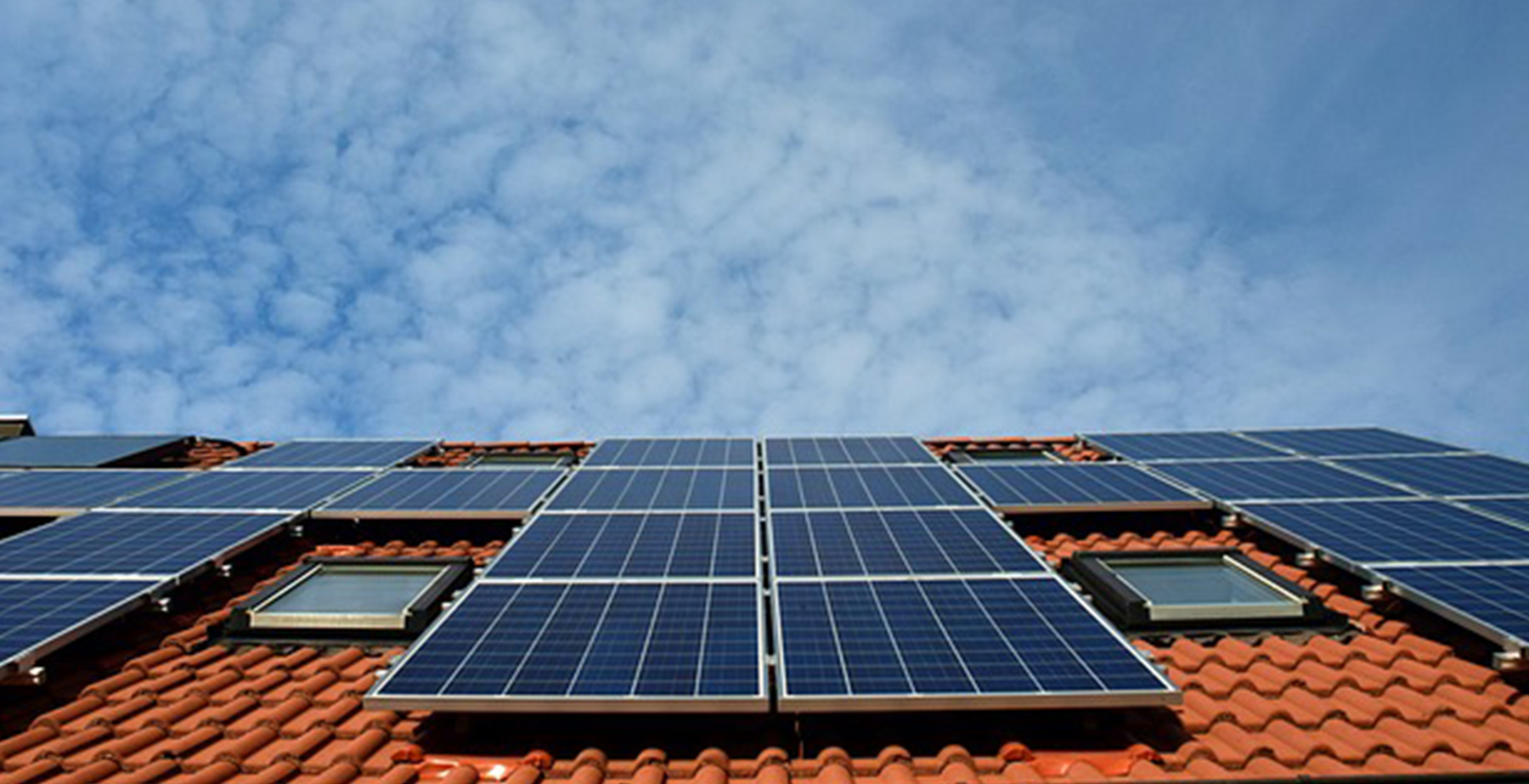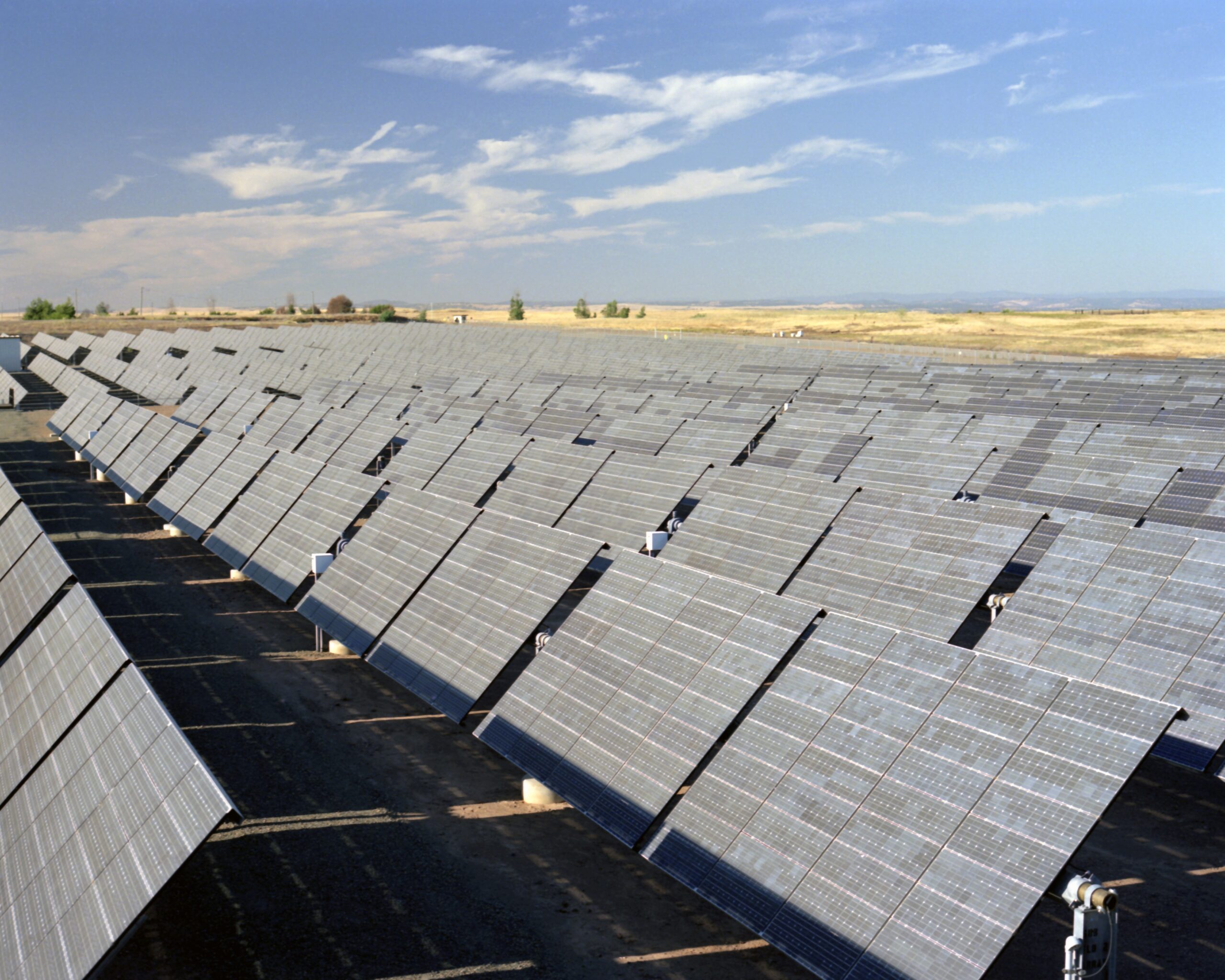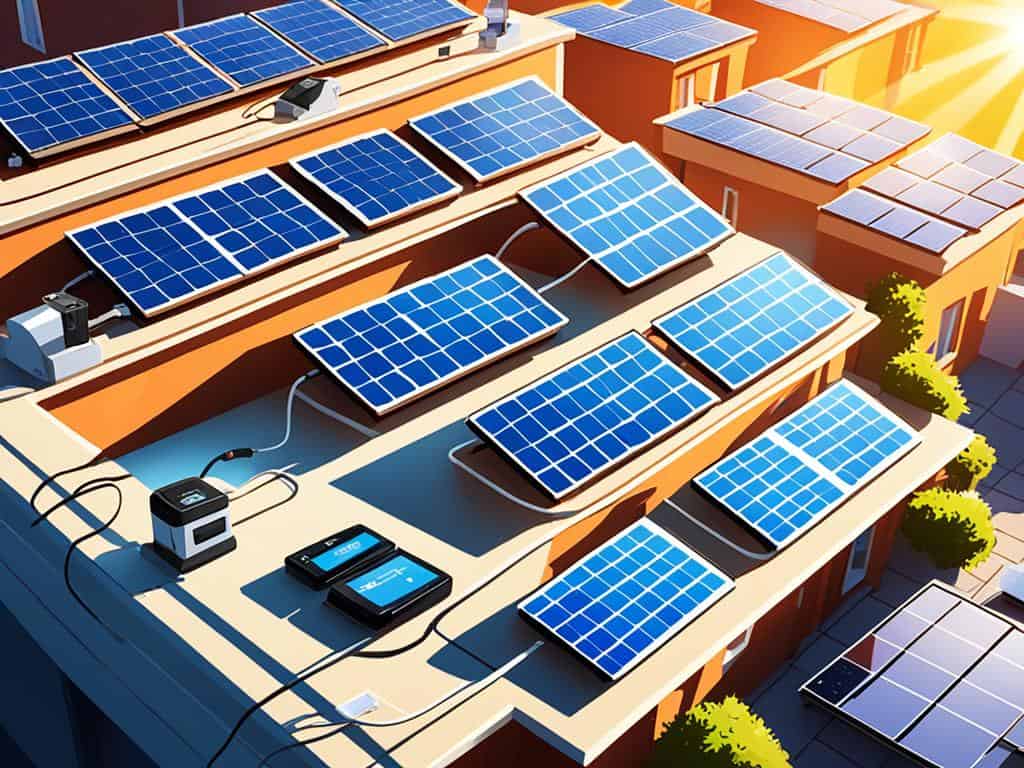Description
Photovoltaic (PV) cells, also known as solar cells, are devices that convert sunlight directly into electricity through a process called the photovoltaic effect. These cells are made of semiconductor materials, typically silicon, that have the unique ability to absorb photons from sunlight and release electrons, generating an electrical current.
The concept of converting sunlight into electricity dates back to the 19th century when the photovoltaic effect was first observed by French physicist Alexandre-Edmond Becquerel in 1839. However, it wasn’t until the mid-20th century that practical solar cells were developed, with the first silicon-based solar cell being invented at Bell Laboratories in 1954.
The importance of photovoltaic cells lies in their ability to generate clean, renewable electricity from the abundant and inexhaustible energy source that is the sun. As concerns over climate change and the depletion of fossil fuels continue to grow, solar energy has emerged as a crucial component of the global transition towards sustainable and environmentally friendly energy sources. Photovoltaic cells play a vital role in this transition, offering a reliable and cost-effective means of harnessing the sun’s energy for various applications, from small-scale residential systems to large-scale solar power plants.
The Photovoltaic Effect
The photovoltaic effect is the process by which solar cells convert sunlight into electrical energy. This phenomenon occurs when photons from the sun’s rays strike the surface of the solar cell, which is typically made of semiconductor materials like silicon.
When a photon with sufficient energy strikes the semiconductor material, it excites an electron, freeing it from its atomic bond. This freed electron, along with the hole (absence of an electron) it leaves behind, creates an electron-hole pair. The semiconductor material is designed with a built-in electric field that separates the electron-hole pairs, forcing the electrons to flow in one direction and the holes in the opposite direction.
This flow of electrons constitutes an electrical current, which can be harnessed and utilized as electricity. The process of converting light energy into electrical energy through the photovoltaic effect is highly efficient and has no moving parts, making solar cells a reliable and low-maintenance source of renewable energy.
Solar Cell Structure and Materials
Solar cells are typically made from semiconductor materials that can absorb sunlight and generate an electrical current through the photovoltaic effect. The most common material used in solar cells is silicon, which can be either monocrystalline or polycrystalline.
Silicon Solar Cells
Monocrystalline silicon solar cells are made from a single crystal of silicon, which is more efficient but also more expensive to produce. Polycrystalline silicon solar cells are made from multiple silicon crystals, making them less expensive but slightly less efficient.
Thin-Film Solar Cells
Thin-film solar cells are made by depositing extremely thin layers of photovoltaic materials onto a substrate, such as glass, plastic, or metal. These materials include amorphous silicon, cadmium telluride (CdTe), copper indium gallium selenide (CIGS), and organic photovoltaic materials. Thin-film solar cells are lightweight, flexible, and can be integrated into building materials, but they typically have lower efficiencies than silicon-based cells.
Emerging Materials
Researchers are exploring new materials for solar cells, such as perovskites, which have shown promising efficiencies and low production costs. Additionally, multi-junction solar cells, which combine multiple semiconductor materials to capture a broader range of the solar spectrum, are being developed for space and concentrated photovoltaic applications.
The choice of materials for solar cells depends on factors such as cost, efficiency, durability, and environmental impact. Ongoing research aims to improve the performance and reduce the cost of solar cell materials, making solar energy more accessible and cost-effective.
Conversion of Sunlight to Electricity
The conversion of sunlight into electricity in a photovoltaic (PV) cell is a multi-step process that involves the following stages:
-
Absorption of Photons: When sunlight strikes the PV cell, the photons (particles of light) are absorbed by the semiconductor material, typically silicon. The energy of the absorbed photons is transferred to electrons in the semiconductor, allowing them to break free from their atoms.
-
Creation of Electron-Hole Pairs: The absorption of photons creates electron-hole pairs within the semiconductor material. An electron-hole pair consists of a free electron and a corresponding hole (an absence of an electron) in the atomic structure.
-
Charge Separation: The PV cell is designed with a built-in electric field created by the junction of two different semiconductor materials (p-type and n-type). This electric field separates the electron-hole pairs, forcing the electrons to flow toward the n-type region and the holes to flow toward the p-type region.
-
Electron Flow and Current Generation: The separated electrons and holes are directed toward opposite sides of the PV cell by the electric field. Metal conductive plates or electrodes are attached to the p-type and n-type regions, allowing the electrons to flow through an external circuit, generating an electric current.
-
Electrical Energy Generation: As the electrons flow through the external circuit, they can power an electrical load, such as a light bulb, appliance, or be fed into an electrical grid. The flow of electrons through the circuit represents the generation of electrical energy from the absorbed sunlight.
-
Recombination and Cycle Continuation: After the electrons have traveled through the external circuit, they recombine with the holes in the p-type region, completing the electrical circuit. This process continues as long as sunlight is available and the PV cell remains exposed to it, generating a continuous flow of electrical energy.
The efficiency of a PV cell depends on several factors, including the semiconductor material, cell design, and the intensity and angle of the incoming sunlight. Advancements in materials, cell architectures, and manufacturing processes continue to improve the efficiency and cost-effectiveness of solar energy conversion.
Factors Affecting Solar Cell Efficiency
The efficiency of solar cells, which determines the amount of solar energy that can be converted into electricity, is influenced by several factors. One key factor is temperature. As the temperature of the solar cell increases, its efficiency tends to decrease. This is because the increased thermal energy causes more electron-hole pairs to recombine before they can be collected, reducing the amount of electricity generated.
Another important factor is the angle of incidence of sunlight on the solar cell. Solar cells are designed to operate optimally when sunlight strikes them at a perpendicular angle. As the angle of incidence deviates from this ideal, the amount of sunlight that can be absorbed by the cell decreases, leading to lower efficiency.
Shading is another significant factor that can impact solar cell efficiency. If part of a solar cell is shaded, either by clouds, nearby buildings, or debris on the surface of the cell, the shaded area will not generate electricity. This can also affect the performance of the entire solar panel or array, as shaded cells can act as resistors, reducing the overall output.
Other factors that can influence solar cell efficiency include the quality and purity of the semiconductor materials used, the design and manufacturing processes, and the presence of any defects or impurities in the cell structure. Proper maintenance and cleaning of solar panels can also help to ensure optimal performance and efficiency over time.
Solar Panel Design and Components
Solar panels, also known as photovoltaic (PV) modules, are designed to convert sunlight into electrical energy. They consist of several key components that work together to generate electricity efficiently and reliably.
The main component of a solar panel is the solar cells, which are typically made of silicon semiconductor materials. These cells are arranged in a grid-like pattern and electrically connected in series and parallel circuits. When sunlight hits the solar cells, the photovoltaic effect occurs, generating an electrical current.
The solar cells are encapsulated between a transparent front cover, typically made of tempered glass, and a back sheet made of a durable material like Tedlar or polyvinyl fluoride (PVF). This encapsulation protects the solar cells from environmental factors such as moisture, wind, and impact.
Surrounding the solar cells is an aluminum frame that provides structural support and protection for the entire panel. The frame also includes mounting holes or clamps that allow the panel to be securely installed on rooftops, ground-mounted systems, or tracking systems.
Within the panel, there are electrical connections and wiring that collect the generated electricity from the solar cells and transfer it to external cables or junction boxes. These connections are made of conductive materials like copper or aluminum and are designed to minimize electrical resistance and losses.
Additionally, solar panels often include a junction box, which houses the electrical terminals and bypass diodes. The bypass diodes are essential for preventing hotspots and ensuring the efficient operation of the panel by allowing current to bypass shaded or underperforming cells.
Overall, the design of solar panels involves carefully integrating various components to maximize energy conversion efficiency, durability, and ease of installation and maintenance.
Solar Energy Systems and Grid Integration
Solar energy systems need to be integrated with the existing electrical grid to allow for the efficient distribution and utilization of the generated electricity. This integration involves several key components and considerations:
Inverters: Photovoltaic cells generate direct current (DC) electricity, but most household appliances and the electrical grid operate on alternating current (AC). Inverters are essential devices that convert the DC electricity produced by solar panels into AC electricity compatible with the grid and household electrical systems.
Grid-Tied Systems: Most solar energy systems are designed to be grid-tied, meaning they are connected to the local utility grid. This allows homeowners or businesses to draw electricity from the grid when their solar panels are not producing enough power, and to feed excess electricity back into the grid when their solar panels are producing more than their immediate needs.
Net Metering: Net metering is a billing mechanism that allows solar system owners to receive credits for the excess electricity they feed back into the grid. These credits can be used to offset the cost of electricity drawn from the grid during periods when the solar system is not producing enough power.
Energy Storage Solutions: While grid-tied systems can rely on the utility grid for backup power, some solar energy systems incorporate energy storage solutions, such as batteries or other storage technologies. These storage systems can store excess energy generated during peak sunlight hours for use during periods of low or no solar production, increasing the system’s self-reliance and resilience.
Smart Grid Integration: As the adoption of solar energy and other renewable sources increases, the integration of these distributed energy resources into the electrical grid becomes more complex. Smart grid technologies, including advanced metering infrastructure, communication networks, and energy management systems, are being developed to facilitate the efficient integration and control of these distributed energy resources.
Grid Stability and Load Balancing: The intermittent nature of solar energy can pose challenges for grid stability and load balancing. Utility companies and grid operators must manage the fluctuations in solar energy production and coordinate with other energy sources to maintain a stable and reliable electricity supply.
Effective integration of solar energy systems into the electrical grid is crucial for maximizing the benefits of this renewable energy source and enabling a smooth transition towards a more sustainable and resilient energy future.
Environmental and Economic Benefits
Solar energy is a clean and renewable source of electricity that offers numerous environmental and economic benefits. From an environmental perspective, solar photovoltaic (PV) systems produce electricity without emitting greenhouse gases or other harmful pollutants into the atmosphere. This makes solar energy a sustainable and environmentally friendly alternative to traditional fossil fuel-based power generation, which contributes significantly to climate change and air pollution.
By harnessing the abundant and renewable energy from the sun, solar PV systems help reduce our reliance on non-renewable resources like coal, oil, and natural gas. This not only mitigates the environmental impact of energy production but also promotes energy independence and security by reducing dependence on imported fuels.
Economically, solar energy offers long-term cost savings for both residential and commercial users. While the initial investment in solar PV systems can be substantial, the fuel (sunlight) is free and abundant. Once the system is installed, the cost of generating electricity is minimal, leading to significant savings over the lifetime of the system, which can span several decades.
Additionally, many governments offer incentives, such as tax credits, rebates, and feed-in tariffs, to encourage the adoption of solar energy. These incentives can further enhance the economic viability of solar PV systems by reducing upfront costs and providing a return on investment through the sale of excess electricity back to the grid.
Moreover, the solar energy industry creates job opportunities in various sectors, including manufacturing, installation, and maintenance, contributing to economic growth and employment. As the demand for solar energy continues to rise, the industry is expected to generate more jobs and drive innovation in related technologies and services.
Challenges and Limitations
Solar energy, despite its numerous advantages, faces several challenges and limitations that need to be addressed. One of the primary challenges is the intermittent nature of solar energy generation. Solar panels can only produce electricity when the sun is shining, and their output fluctuates based on weather conditions, time of day, and seasonal variations. This intermittency necessitates the use of energy storage systems or backup power sources to ensure a consistent and reliable supply of electricity.
Another limitation is the land area required for large-scale solar installations. Solar farms and utility-scale projects can occupy vast tracts of land, potentially leading to land-use conflicts, environmental concerns, and issues related to habitat fragmentation. Careful site selection and responsible land management practices are essential to mitigate these impacts.
The initial cost of installing solar energy systems can also be a significant barrier, particularly for residential and small-scale applications. Although the cost of solar panels and associated components has decreased significantly in recent years, the upfront investment can still be substantial. However, various incentives, financing options, and the long-term savings on electricity bills can help offset these initial costs.
Additionally, the efficiency of solar cells is a limitation that researchers and manufacturers continue to address. While the efficiency of commercially available solar cells has improved over time, there is still room for further improvement to maximize the conversion of sunlight into electrical energy.
Finally, the integration of solar energy into existing power grids and the development of smart grid technologies present technical and regulatory challenges. Effective grid integration, energy storage solutions, and policies that support the widespread adoption of solar energy are crucial for its successful large-scale deployment.
Future Developments and Research
The solar cell industry is continuously evolving, driven by ongoing research and development efforts to improve efficiency, reduce costs, and explore novel materials and technologies. One area of focus is the development of third-generation photovoltaic cells, which aim to surpass the theoretical efficiency limits of traditional silicon-based cells.
Researchers are investigating the use of advanced materials such as perovskites, organic semiconductors, and quantum dots for next-generation solar cells. These materials have the potential to offer higher efficiencies, lower manufacturing costs, and increased flexibility compared to traditional silicon cells.
Another promising area of research is the development of multi-junction solar cells, which combine multiple layers of different semiconductor materials to capture a broader range of the solar spectrum. These cells can achieve higher efficiencies by utilizing different materials optimized for specific wavelengths of light.
Additionally, researchers are exploring ways to enhance the light-trapping capabilities of solar cells through advanced nanostructures and light-management techniques. These approaches aim to increase the absorption of sunlight and reduce reflection losses, ultimately improving overall energy conversion efficiency.
Furthermore, the integration of solar cells with energy storage systems, such as batteries or hydrogen fuel cells, is an active area of research. This combination could enable more reliable and consistent energy supply, even during periods of low or no sunlight.
Overall, the future of solar cell technology holds great promise, with ongoing research and development efforts focused on improving efficiency, reducing costs, and exploring innovative materials and designs. As these advancements are realized, solar energy is expected to become an increasingly viable and cost-effective source of renewable energy, contributing to a more sustainable future.







